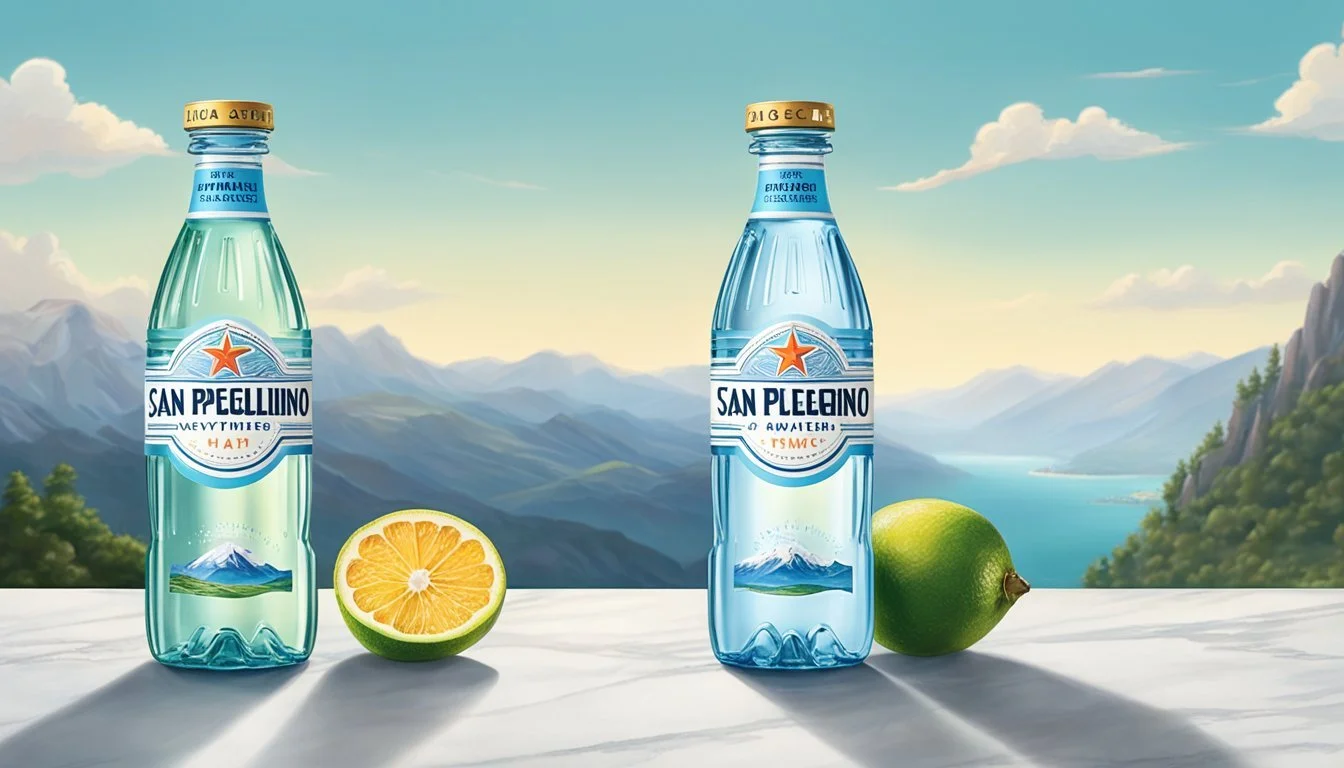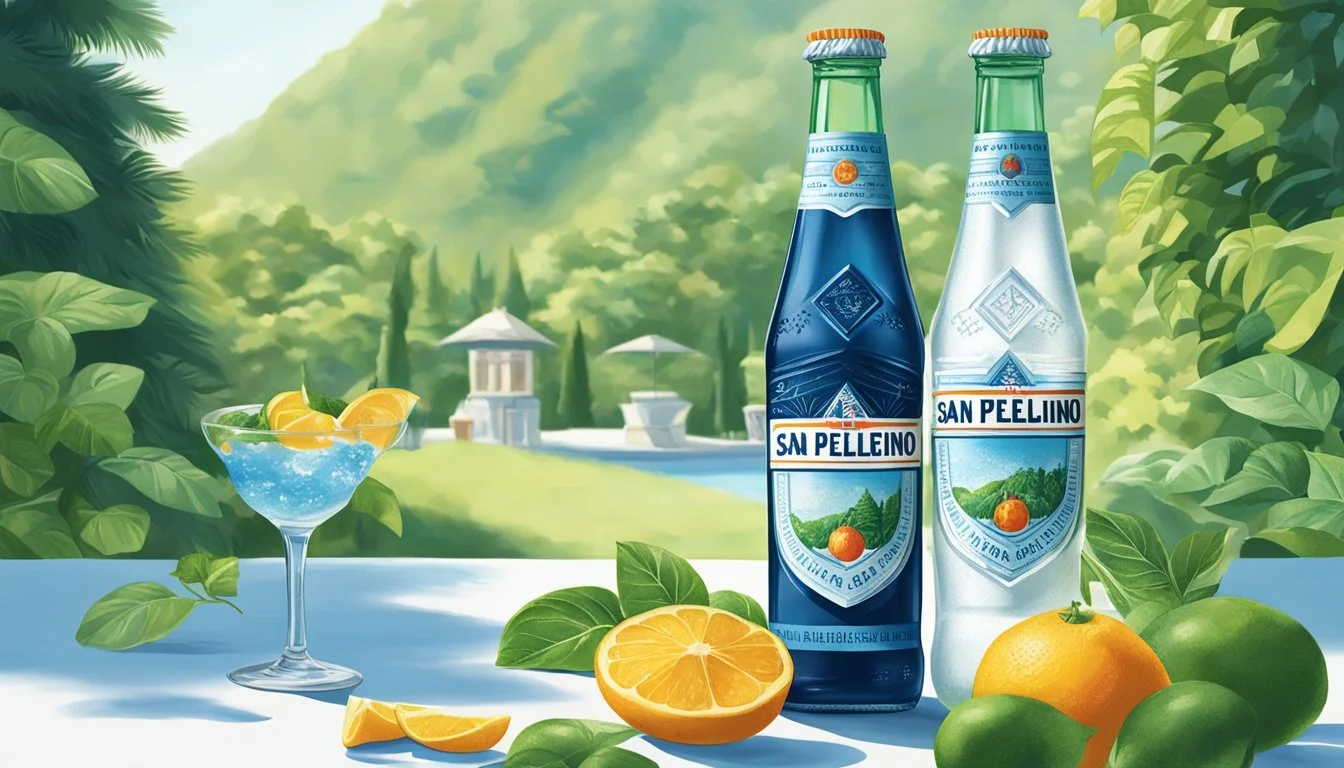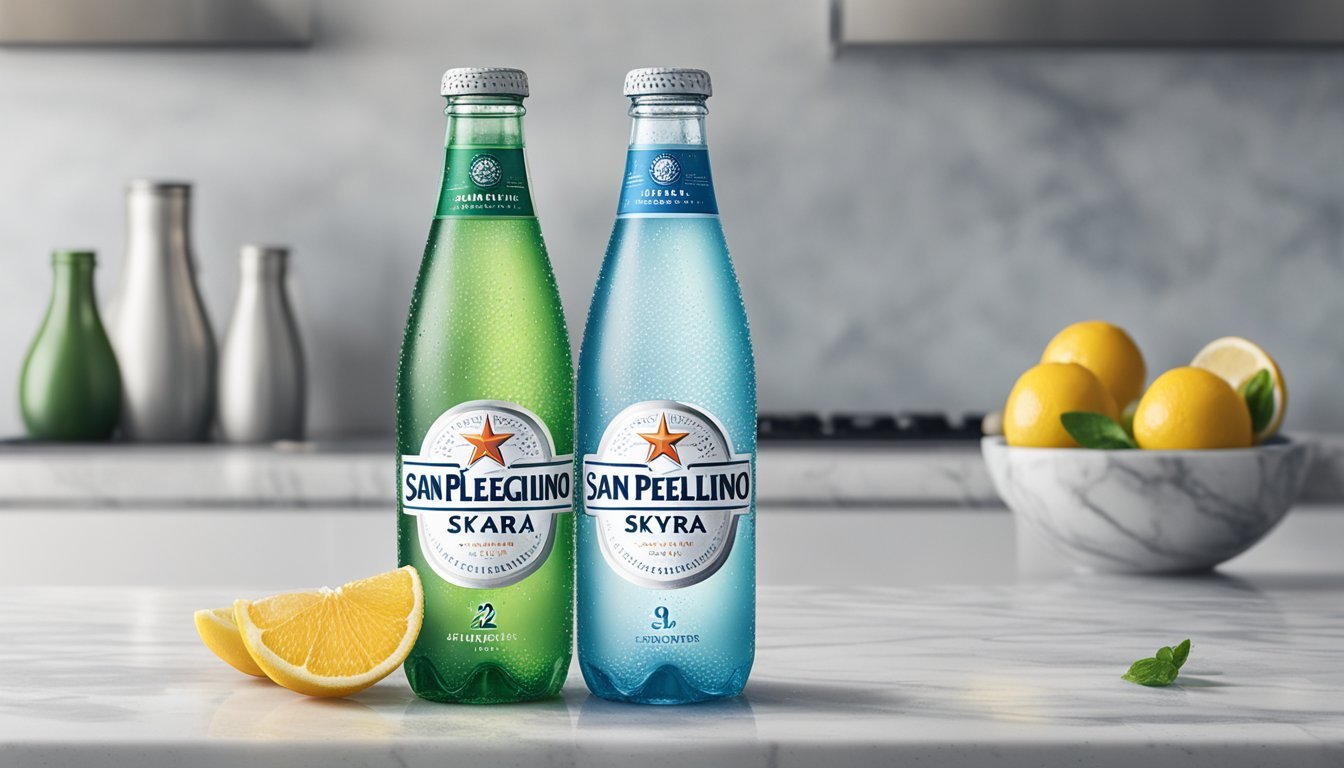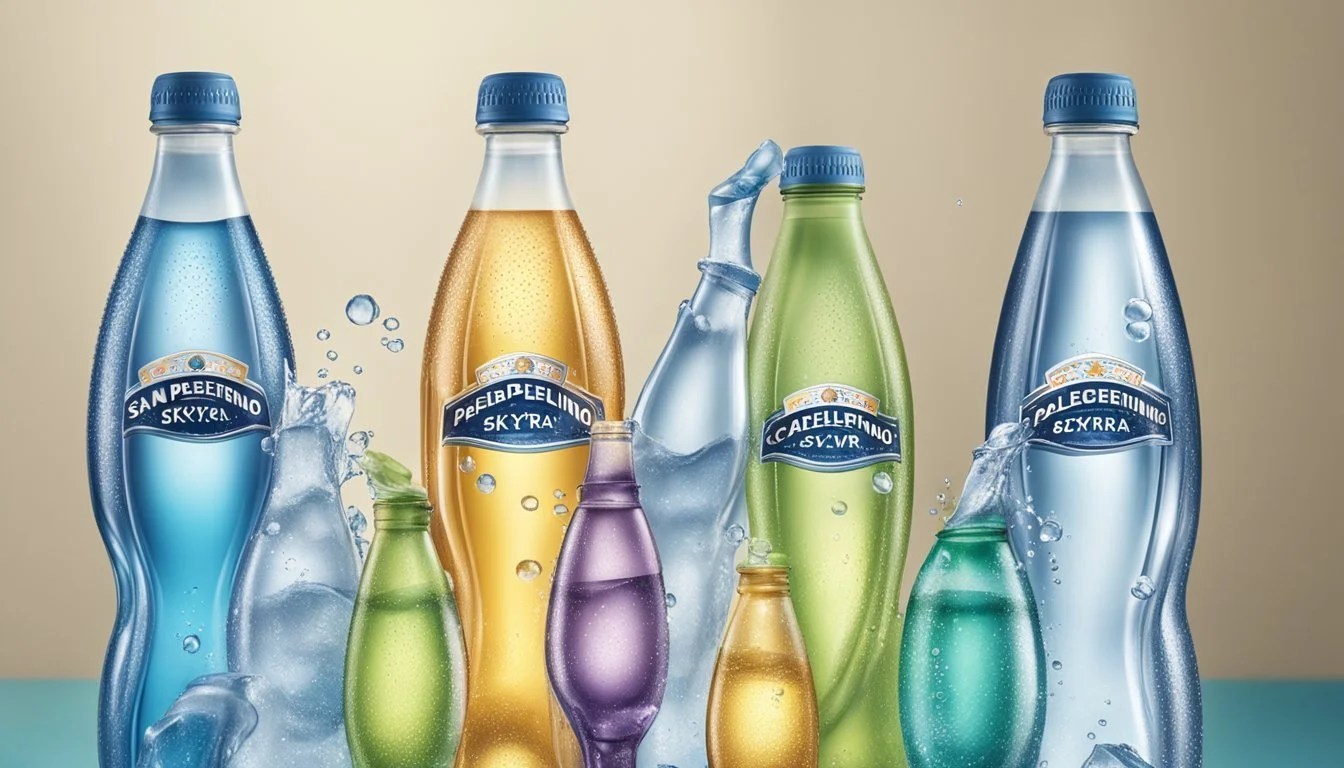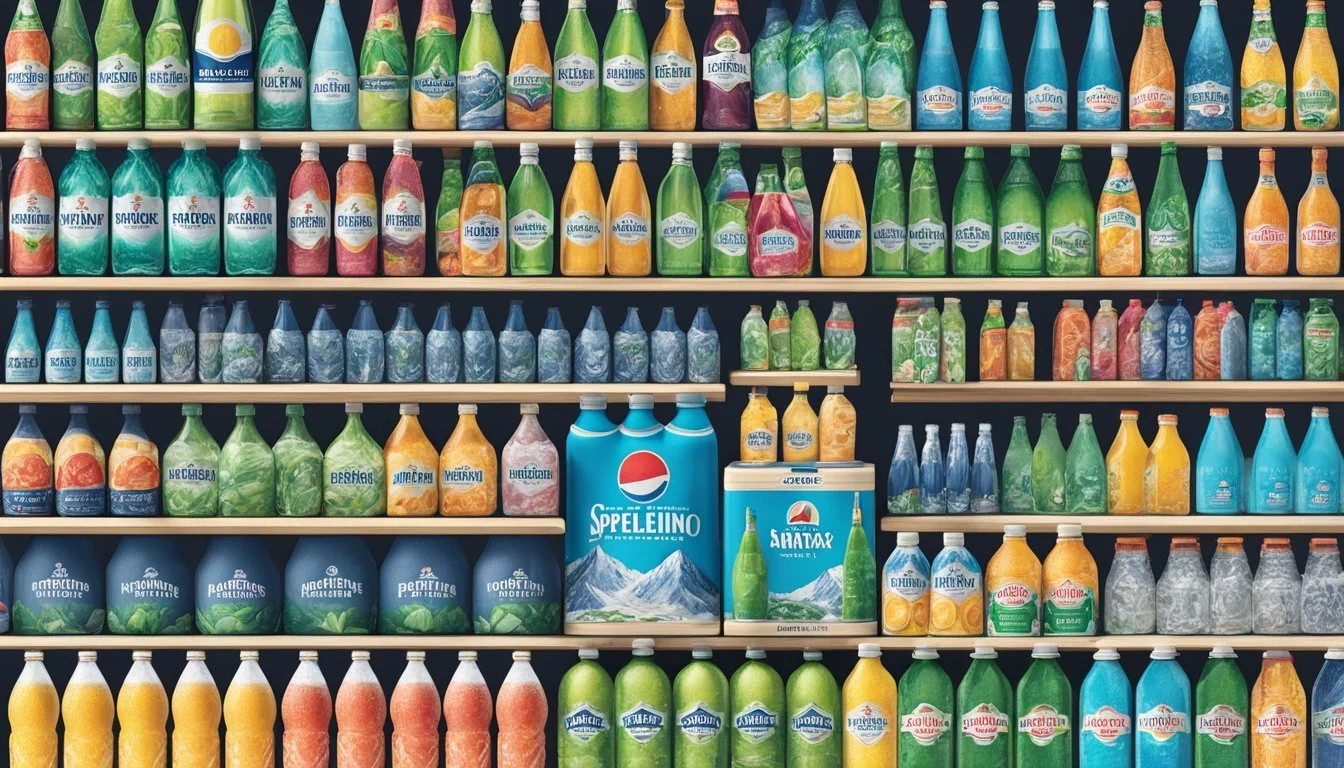San Pellegrino vs. Skyra
Which Bottled Water is Better for You?
Choosing between San Pellegrino and Skyra may seem like a simple preference, but understanding the nuances can make a big difference in your hydration experience. San Pellegrino, known for its sparkling texture and slightly acidic pH of 5.6 when bottled, offers a vibrant and refreshing taste that many enjoy with meals. It’s a favorite among those who appreciate effervescent water with a touch of Italian elegance.
Skyra, on the other hand, boasts a high pH level and electrolyte content, positioning itself as a premium choice for those seeking enhanced hydration benefits. Skyra's high pH level and added electrolytes give it a clear edge in hydration over San Pellegrino. This makes Skyra an ideal option for health-conscious individuals who prioritize the quality of their bottled water in terms of ionization and mineral content.
While both waters bring unique qualities to the table, Skyra's functional benefits and San Pellegrino's exquisite taste appeal to different preferences. Readers interested in making an informed decision will find a detailed comparison between these two beloved brands in the following sections.
Overview of Bottled Water
Bottled water has evolved significantly, offering consumers a range of options from basic hydration to luxury experiences. Understanding the history and different types is essential for making informed choices.
Historical Context
The concept of bottled water dates back centuries. In ancient Rome, water was bottled in clay vessels for its purity and taste. By the 19th century, European spas were bottling mineral water, promoting its health benefits.
The modern bottled water industry began in the early 20th century. Brands like Perrier and San Pellegrino emerged, offering sparkling and mineral water options. Today, bottled water is a global staple, driven by the demand for convenience and quality.
Types of Bottled Water
Bottled water comes in various forms, each catering to different preferences and needs.
Still Water: Pure and simple, often sourced from springs or prepared through reverse osmosis.
Sparkling Water: Carbonated either naturally or artificially, providing a fizzy alternative.
Mineral Water: Contains natural minerals from underground sources, believed to offer health benefits.
Spring Water: Sourced from natural springs, often prized for its taste and natural filtration.
Understanding these types helps consumers choose the best option based on taste, health benefits, and lifestyle.
Brand Profiles
San Pellegrino and Skyra are two well-regarded names in the bottled water industry, each with its unique origins and characteristics. San Pellegrino has a storied legacy dating back to the Italian Alps, while Skyra is a newer entrant known for its pure Icelandic water.
San Pellegrino's Legacy
San Pellegrino, originating from the Italian Alps, has been synonymous with high-quality mineral water since 1899. Known for its distinctive sparkling water, it is sourced from the San Pellegrino Terme area.
The water is naturally filtered through the Alps, enriching it with minerals like calcium, magnesium, and bicarbonate. San Pellegrino is often praised for its crisp, refreshing taste. The brand also extends to fruit-flavored sparkling waters, adding to its wide appeal.
Skyra's Emergence
Skyra is sourced from Iceland's pristine environment, known for its clean, untouched landscapes. This water is harvested from an underground spring called Ölfus Spring, which is protected by a lava field.
Skyra boasts a naturally high pH level, promoting alkalinity, which some believe supports better hydration. The brand emphasizes sustainability, packaging its water in eco-friendly bottles. Skyra's emergence in the market caters to health-conscious consumers looking for pure, mineral-rich water options.
Source and Natural Attributes
San Pellegrino and Skyra are distinguished by their unique water sources and mineral compositions, which define their taste and benefits.
Water Source Comparison
San Pellegrino originates from the natural springs in the Italian Alps. This natural source ensures that the water is enriched with a variety of minerals as it passes through the layers of rocks and soil.
Skyra water is sourced from natural springs in Iceland. These springs are fed by glacial meltwater, known for its purity and low levels of pollutants, making Skyra exceptionally clean.
The source's location affects the mineral content and taste, with San Pellegrino having a more robust mineral profile due to its journey through the Alps, compared to the pristine and slightly softer taste of Skyra from Icelandic springs.
Natural Mineral Content
San Pellegrino contains a notable amount of minerals including calcium, magnesium, and bicarbonate. This rich mineral content contributes to its slightly more acidic pH of 5.6 and a tangy taste profile.
Skyra boasts a lower mineral content, which results in a more neutral pH and a cleaner taste. Its mineral composition includes silica, calcium, and magnesium, albeit in lower concentrations compared to San Pellegrino.
The mineral makeup of each brand influences not just the flavor but also potential health benefits, with San Pellegrino providing higher mineral content per sip, while Skyra offers a less mineralized, purer water option.
Taste Profile
San Pellegrino and Skyra offer distinct flavor experiences driven by their unique mineral compositions and sources. This section explores the main factors that contribute to their flavors and insights provided by sommeliers.
Flavor Factors
San Pellegrino, sourced from Italian springs, is known for its high bicarbonate and sodium content, giving it a slightly salty, tangy taste that is refreshing and crisp. Skyra, on the other hand, originates from Icelandic glaciers, providing a purer, more neutral taste due to its low mineral content. This creates a smooth, clean sensation on the palate with minimal aftertaste.
The mineral content significantly influences the taste profiles. San Pellegrino contains higher levels of magnesium and calcium, contributing to a slight bitterness and a fuller mouthfeel. In contrast, Skyra's low total dissolved solids (TDS) lead to a less pronounced flavor, which some might perceive as boring but highly refreshing and clean.
Sommelier Insights
Water sommeliers, experts in the subtleties of mineral water flavors, offer valuable insights into the tasting experience of San Pellegrino and Skyra. They note that San Pellegrino complements rich, fatty foods due to its crisp, acidic profile, which can cleanse and refresh the palate. It pairs well with dishes like pasta carbonara or steak, balancing out heavy flavors.
Skyra is often recommended for pairing with delicate dishes, such as sushi or light salads, where its clean taste does not overpower the subtle flavors of the food. Its neutrality makes it a versatile choice for wine tastings, ensuring that it doesn't conflict with the bouquet of the wine, allowing the flavors of the wine to shine through. This nuanced understanding highlights how these waters can either enhance or complement different culinary experiences.
Carbonation Process
San Pellegrino and Skyra use different carbonation techniques, impacting the texture and taste experience of their sparkling waters.
Carbonation Techniques
San Pellegrino's carbonation process involves natural and artificial elements. The water gathers carbon dioxide gas as it filters through underground rocks, forming natural bubbles. During bottling, additional CO2 is added due to initial loss, ensuring a consistent bubbly texture.
Skyra, known for its pristine Icelandic origins, employs a mechanically induced carbonation process. The water is sourced from glacial springs and then carbonated by directly infusing CO2 during bottling. This method allows control over the bubble size and carbonation level, catering to consumer preferences for a precise sparkling experience.
Effects on Palate
San Pellegrino's naturally sourced carbonation results in softer, more delicate bubbles, enhancing the water's mineral-rich profile. This softer effervescence makes it a preferred choice for those who enjoy a subtle, refined sparkle.
Skyra, with its controlled mechanical carbonation, offers a more consistent and forceful bubbly sensation. This firmer effervescence is favored by consumers looking for a striking, refreshing mouthfeel. The contrast in bubble texture directly influences how the flavors and minerals are perceived on the palate, making each brand distinctive.
Health and Hydration
San Pellegrino and Skyra both offer unique benefits in terms of health and hydration. A look at their mineral content and hydration properties highlights the strengths of each water.
Minerals and Health Benefits
San Pellegrino is a sparkling mineral water enriched with a significant amount of magnesium, calcium, and sulfates. Magnesium supports muscle function, while calcium strengthens bones. Sulfates ease digestion.
In contrast, Skyra, a still water, features a high pH level and a rich mix of electrolytes like potassium and magnesium. These electrolytes aid in maintaining fluid balance and muscle function, making it a suitable option for active individuals.
Hydration Efficacy
San Pellegrino’s mineral content can enhance hydration through its electrolytes. The carbonation might appeal to those who prefer a sparkling option, promoting increased water intake.
Skyra stands out with its alkalinity and elevated electrolyte levels. Its high pH level not only contributes to better hydration but also neutralizes acidity in the body. These factors make Skyra particularly effective for replenishing lost fluids and electrolytes efficiently.
Packaging and Sustainability
San Pellegrino and Skyra offer distinctive approaches concerning packaging and sustainability, highlighting differences in material use and environmental considerations.
Material Use
San Pellegrino predominantly uses glass bottles for its sparkling water. This choice adds a premium feel and helps in preserving the carbonation and taste. Glass is entirely recyclable and can be reused multiple times, which reduces the environmental burden.
Skyra, on the other hand, packages its water in recyclable plastic bottles. While plastic is lightweight and often more convenient for transportation, its impact on the environment is a pressing concern. Skyra emphasizes its commitment to minimizing waste and encourages customers to recycle the bottles after use.
Table: Packaging Materials
Brand Material San Pellegrino Glass Bottles Skyra Plastic Bottles
Environmental Considerations
San Pellegrino's use of glass bottles, while environmentally friendly in terms of recyclability, poses challenges due to the energy and resources needed for production and transportation. Glass bottles are heavier compared to plastic, which leads to higher emissions during shipping.
Skyra sources its water from Iceland, emphasizing a natural filtration process through basalt and lava. The company underscores its environmental sustainability efforts by ensuring that nothing is added or removed from the water. Despite using plastic, Skyra promotes environmental consciousness by encouraging extensive recycling practices and maintaining high purity levels of its water.
To further enhance sustainability, both brands overlook aspects such as reuse and consumption impacts, aiming to balance efficiency with environmental responsibility.
Market Presence and Consumer Choice
San Pellegrino and Skyra are popular bottled water brands with distinct market positions. This section examines their sales data, market share, and consumer preferences.
Sales Data and Market Share
San Pellegrino, known for its sparkling mineral water, enjoys strong market presence globally. Skyra, a newer brand, has carved out a niche with its high pH and electrolyte benefits.
Sales figures for San Pellegrino show consistent growth, driven by its premium positioning and global distribution. Skyra, while smaller in scale, has seen rapid expansion due to its health-oriented marketing.
Both brands leverage distinct selling points to maintain and grow their market shares amidst rising competition. San Pellegrino capitalizes on its reputation and international reach, whereas Skyra targets health-conscious consumers seeking hydration benefits.
Consumer Preferences
Consumer preferences for bottled water vary based on taste, health benefits, and brand loyalty. San Pellegrino's sparkling water is popular for its crispness and bold taste. It is often preferred by those who enjoy carbonated beverages.
Skyra, with its smoother taste and high mineral content, appeals to individuals focused on hydration and wellness.
Acqua Panna and Skyra cater to different market segments. Acqua Panna offers a smooth, neutral taste, while Skyra emphasizes its high pH and electrolyte content. Consumers often choose based on these specific attributes.
Serving temperature also impacts preference. San Pellegrino's optimal taste is achieved at cooler temperatures, enhancing its refreshing quality. Skyra's health benefits remain consistent regardless of temperature.
In summary, consumers choose based on specific preferences and health considerations, reflecting the diverse offerings of San Pellegrino and Skyra in the market.
More About San Pellegrino
Acqua Panna vs San Pellegrino: Which Bottled Water is Better?
Boxed Water vs San Pellegrino: Which Bottled Water is Better?
Core Hydration vs San Pellegrino: Which Bottled Water is Better?
Ice Mountain vs San Pellegrino: Which Bottled Water is Better?
Icelandic Glacial vs San Pellegrino: Which Bottled Water is Better?
Just Water vs San Pellegrino: Which Bottled Water is Better?
Mountain Valley Spring Water vs San Pellegrino: Which Bottled Water is Better?
Nestle Pure Life vs San Pellegrino: Which Bottled Water is Better?
Poland Spring vs San Pellegrino: Which Bottled Water is Better?
San Pellegrino vs Alkaline88: Which Bottled Water is Better?
San Pellegrino vs Aqua Carpatica: Which Bottled Water is Better?
San Pellegrino vs Cascade Mountain: Which Bottled Water is Better?
San Pellegrino vs Castle Rock: Which Bottled Water is Better?
San Pellegrino vs CBD Living: Which Bottled Water is Better?
San Pellegrino vs Crystal Geyser: Which Bottled Water is Better?
San Pellegrino vs Crystal Lake: Which Bottled Water is Better?
San Pellegrino vs Essence pH10: Which Bottled Water is Better?
San Pellegrino vs Hawaii Volcanic: Which Bottled Water is Better?
San Pellegrino vs Hawaiian Springs: Which Bottled Water is Better?
San Pellegrino vs Kirkland Signature: Which Bottled Water is Better?
San Pellegrino vs Liquid Death: Which Bottled Water is Better?
San Pellegrino vs Open Water: Which Bottled Water is Better?
San Pellegrino vs Proud Source: Which Bottled Water is Better?
San Pellegrino vs Purely Sedona: Which Bottled Water is Better?
San Pellegrino vs Richard's Rainwater: Which Bottled Water is Better?
San Pellegrino vs Simple Truth: Which Bottled Water is Better?
San Pellegrino vs Smartwater: Which Bottled Water is Better?
San Pellegrino vs Solan de Cabras: Which Bottled Water is Better?
San Pellegrino vs Talking Rain AQA: Which Bottled Water is Better?
San Pellegrino vs Topo Chico: Which Bottled Water is Better?
San Pellegrino vs Weird Water: Which Bottled Water is Better?
San Pellegrino vs Whole Foods 365: Which Bottled Water is Better?
San Pellegrino vs Whole Foods Italian Still Mineral water: Which Bottled Water is Better?
San Pellegrino vs Zephyrhills: Which Bottled Water is Better?


